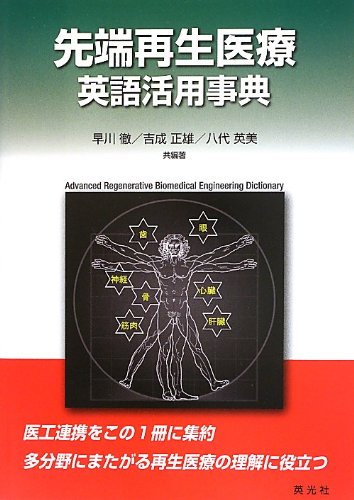2 0 0 0 OA 中性フッ化物の応用がインプラント周囲炎を増悪させる可能性
- 著者
- 吉成 正雄
- 出版者
- 公益社団法人 日本口腔インプラント学会
- 雑誌
- 日本口腔インプラント学会誌 (ISSN:09146695)
- 巻号頁・発行日
- vol.30, no.3, pp.182-190, 2017-09-30 (Released:2017-11-05)
- 参考文献数
- 22
- 被引用文献数
- 1
中性フッ化物の応用がチタンインプラントの耐食性に与える影響およびインプラント周囲炎を増悪させる可能性について検討した結果,以下が明らかとなった.①チタンイオンの溶出を引き起こす因子はフッ化物以外にも様々あり,インプラント周囲炎=フッ化物と一義的に限定するのには無理がある.②酸性(pH低)のフッ化物のみがチタンを腐食する.③歯肉縁下および縁上において,持続的なpH低下を支持するエビデンスはない.④急性炎症により生ずるpHの低下はほとんどない.⑤歯肉縁下において溶存酸素濃度が低下してもpHは低下せず腐食の危険性は少ない.⑥チタンへのフッ化物の応用は,抗菌性の付与など,積極的一面も存在する.以上より,中性フッ素化物の応用がチタンを腐食させる可能性が少ないことから,中性フッ化物の応用がインプラント周囲炎を増悪させる可能性はきわめて少ない.
1 0 0 0 OA 歯科インプラントと生体骨組織との界面
- 著者
- 井上 孝 吉成 正雄 鮎川 保則 田中 輝男 下野 正基
- 出版者
- The Surface Finishing Society of Japan
- 雑誌
- 表面技術 (ISSN:09151869)
- 巻号頁・発行日
- vol.49, no.7, pp.682-689, 1998-07-01 (Released:2009-10-30)
- 参考文献数
- 51
- 被引用文献数
- 4
1 0 0 0 OA 加圧成形用セラミックスの繰り返し使用が各種物性に及ぼす影響
- 著者
- 三嶋 直之 富田 達洋 松原 秀憲 簗瀬 武史 吉成 正雄
- 出版者
- 公益社団法人 日本口腔インプラント学会
- 雑誌
- 日本口腔インプラント学会誌 (ISSN:09146695)
- 巻号頁・発行日
- vol.27, no.4, pp.541-548, 2014-12-31 (Released:2015-02-01)
- 参考文献数
- 25
The aim of this study was to examine the possibility of repeated heat-pressing of pressable glass-ceramic by evaluating the influence of repeated heat-pressing on mechanical properties, surface characteristics and dimensional accuracy. A commercially available pressable glass-ceramic system (IPS e.max Press, Ivoclar Vivadent, Liechtenstein) was selected in this study. Disc samples with 12.5 mm in diameter and 1.3 mm in thickness were heat-pressed and used as the first heat-pressing specimens. Sprue and button parts of the first heat-pressed specimens were retrieved, and they were used to construct the second heat-pressed specimens. The third heat-pressing groups were constructed in just the same way as the second heat-pressing groups. All the heat-pressing procedures were performed according to the manufacturers' instructions. After the arithmetic mean surface roughness (Ra) of pressed specimens was measured, a biaxial flexural strength (BFS) of disc specimens was measured using a universal testing machine. Surface hardness, optical microscopic and scanning electron microscopic observations were carried out. Surface characteristics were examined with X-ray diffractometry (XRD) and electron probe microanalysis (EPMA). The dimensional accuracy of a heat-pressed full crown was also evaluated. The Ra values ranged from 4.0-4.3 μm of all heat-pressing groups. The BFS values obtained were 346±29 MPa, 312±24 MPa and 305±20 MPa for the first, second and third heat-pressing group, respectively. The third heatpressing group showed a lower BFS mean than the first heat-pressing group (p=0.038). Surface hardness showed around 540 Hv in all heat-pressing groups. Microscopic observations revealed that small amounts of porosity were observed in all heat-pressing groups with no differences among the number of heat-pressings, and that the apparent lithium disilicate crystals were confirmed by XRD. A compositional change was not recognized in all heatpressing specimens by EPMA. The dimensional change of all heat-pressed full crowns ranged from +0.16-0.19% with no differences among the number of heat-pressings. These results demonstrated that the repeated heatpressing of pressable glass-ceramics used in this study was available with a slight decrease in strength and no differences in surface characteristics and dimensional accuracy.
1 0 0 0 OA フッ化物入りペーストがチタンの耐食性に与える影響
- 著者
- 木村 英一郎 野村 智義 溝口 尚 吉成 正雄
- 出版者
- 公益社団法人 日本口腔インプラント学会
- 雑誌
- 日本口腔インプラント学会誌 (ISSN:09146695)
- 巻号頁・発行日
- vol.27, no.1, pp.54-60, 2014-03-31 (Released:2014-04-20)
- 参考文献数
- 22
Fluoride-containing pastes for professional mechanical tooth cleaning (PMTC) have been frequently used during implant treatment. However, the influence of these pastes on the corrosion resistance of titanium implants is not well understood. The objective of this study was to clarify the influence of the pH of fluoride-containing paste on the corrosion resistance of commercially available pure titanium (cp-Ti). Commercially available PMTC pastes with neutral pH (6.8-7.4) and different fluorine concentration (400-980 ppm), acidulated phosphate fluoride (APF) paste (APF 9000A, fluorine concentration:9000 ppm, pH=3.7), and experimental acidic NaF paste (NaF900A, fluorine concentration:900 ppm, pH=4.0) were applied to polished cp-Ti disks (grade 2). After storing the specimens at 37℃ for 3 days in a humid atmosphere, the color difference was measured, and optical microscope and scanning electron microscope (SEM) observations of the Ti disks were performed. In addition, the amounts of Ti dissolved into the pastes were evaluated. Remarkable color differences were observed on the Ti disks coated with APF9000A and NaF900A pastes of ΔE*ab=12.0(±2.3) and 8.8(±1.4), respectively. In contrast, negligible color differences were observed on the other specimens with ΔE*ab ranging from 0.6 to 1.2. The optical microscopic and SEM observations revealed that the Ti disks coated with APF9000A and NaF900A pastes had roughened surface morphologies caused by pitting corrosion. In addition, noticeable amounts of Ti, 25.3(±6.2) and 8.6(±2.3) µg/cm2, from Ti disks coated with APF9000A and NaF900A pastes, respectively, were detected. Accordingly, the remarkable color differences of the APF9000A and NaF900A specimens were due to the roughening of the surface caused by corrosion of the Ti surface. These results indicate that fluoride-containing pastes with low pH may reduce the corrosion resistance of titanium, and so great care is required when using these fluoride-containing pastes for PMTC.
1 0 0 0 OA 次亜塩素酸ナトリウム処置した象牙質の接着に及ぼす還元剤の効果
- 著者
- 武本 真治 春山 亜貴子 松本 倫彦 服部 雅之 吉成 正雄 河田 英司 小田 豊
- 出版者
- 一般社団法人 日本歯科理工学会
- 雑誌
- 日本歯科理工学会誌 (ISSN:18844421)
- 巻号頁・発行日
- vol.30, no.1, pp.41-46, 2011-01-25 (Released:2017-05-08)
- 参考文献数
- 16
次亜塩素酸ナトリウム(NaClO)を含有した根管清掃剤で処理した牛歯歯冠象牙質への4-META/MMA-TBB系レジンセメントの接着強さに及ぼす還元剤処理の影響を検討した.根管清掃剤で処理した牛歯歯冠象牙質の接着強さは,根管清掃剤の処理時間が長くなるにしたがって低下した.一方で,根管清掃剤処理後に還元剤を応用するとその接着強さは,根管清掃剤で処理していない牛歯歯冠象牙質の接着強さと同等であることが明らかとなった.また,エッチングと還元剤での処理の順序は接着強さに影響しないことが明らかになった.さらに,根管清掃剤で処理することにより,レジンタグの伸長が抑制されるものの,還元剤を応用するとレジンタグの伸長が抑制されないことが明らかになった.
1 0 0 0 先端再生医療 : 英語活用事典
- 著者
- 早川徹 吉成正雄 八代英美共編著
- 出版者
- 英光社
- 巻号頁・発行日
- 2013

